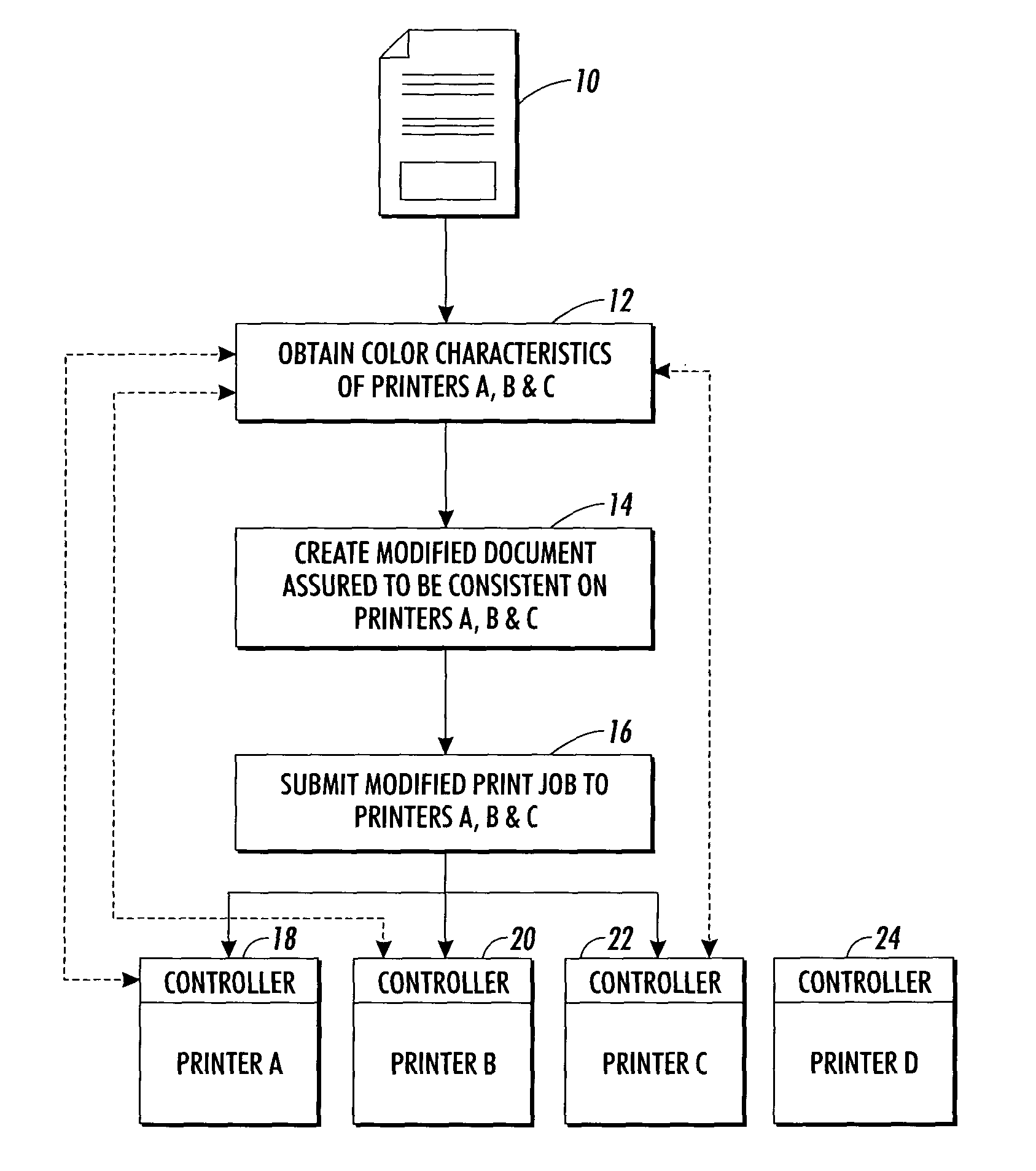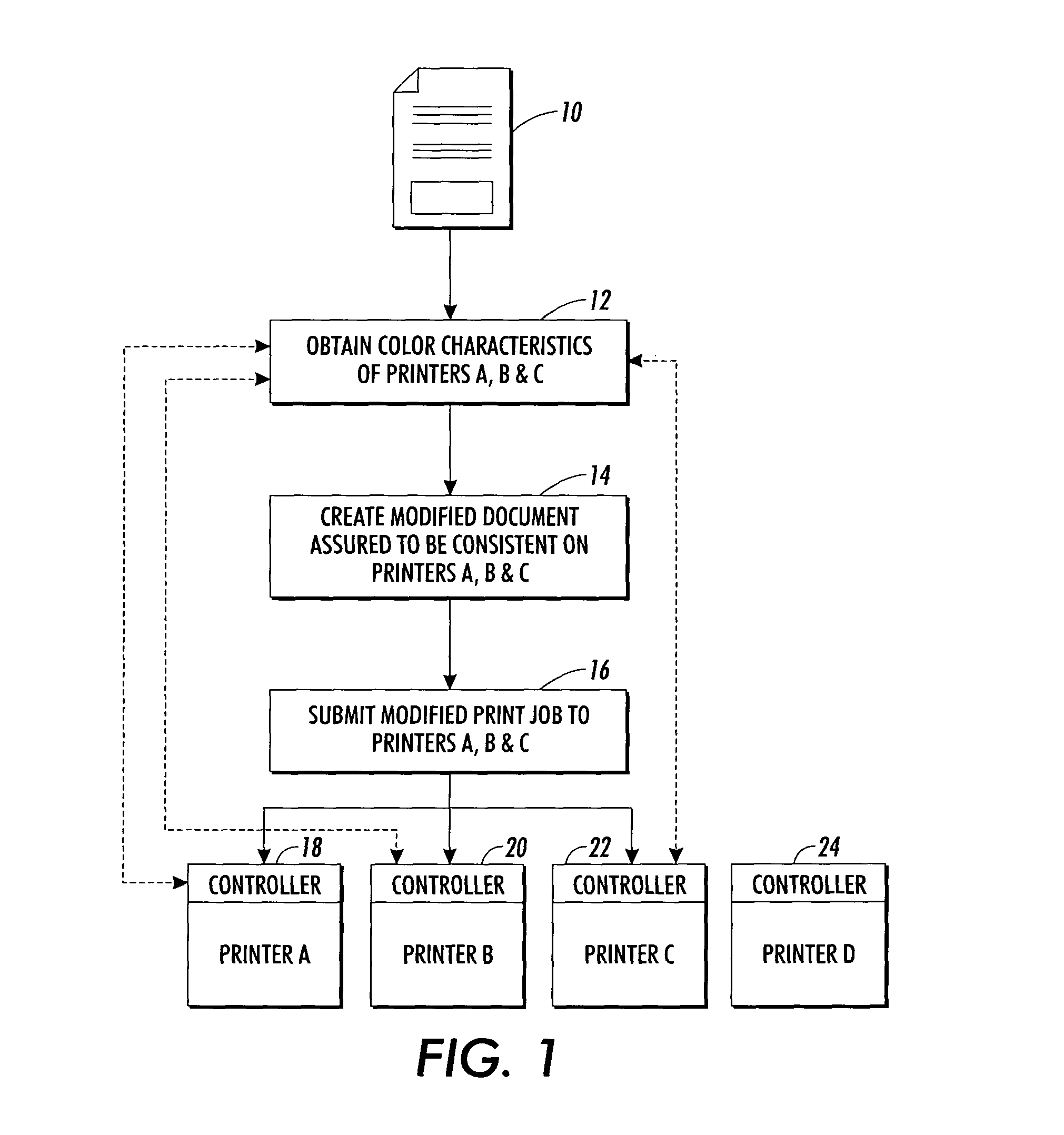System and method for obtaining color consistency for a color print job across multiple output devices
a color print job and output device technology, applied in the field of color rendering, can solve the problems of not ensuring consistent color reproduction in certain applications involving multiple output devices, different output devices have different color gamuts, and standard color management approaches cannot only guarantee consistent color reproduction. the effect of color consistency
- Summary
- Abstract
- Description
- Claims
- Application Information
AI Technical Summary
Benefits of technology
Problems solved by technology
Method used
Image
Examples
Embodiment Construction
The present invention utilizes color characteristics from the set of targeted output printing devices to modify input color jobs such that color consistency is provided throughout and maximal image quality achieved across a set of output devices.
The method involves first identifying a group of devices to which a job is intended to be rendered; obtaining color characteristics from devices in the identified group; modifying the job based on the obtained color characteristics; and rendering the job on one or more of the devices. Device controllers associated with each of the output devices are queried to obtain color characteristics specific to the associated output device. The device may comprise the raw device alone or the combination of the raw device and the controller or front-end that drives the device. Modifications are computed by a transform determined by using the color characteristics of the output devices along with the content of the job itself. The method further compr...
PUM
 Login to View More
Login to View More Abstract
Description
Claims
Application Information
 Login to View More
Login to View More - R&D
- Intellectual Property
- Life Sciences
- Materials
- Tech Scout
- Unparalleled Data Quality
- Higher Quality Content
- 60% Fewer Hallucinations
Browse by: Latest US Patents, China's latest patents, Technical Efficacy Thesaurus, Application Domain, Technology Topic, Popular Technical Reports.
© 2025 PatSnap. All rights reserved.Legal|Privacy policy|Modern Slavery Act Transparency Statement|Sitemap|About US| Contact US: help@patsnap.com



